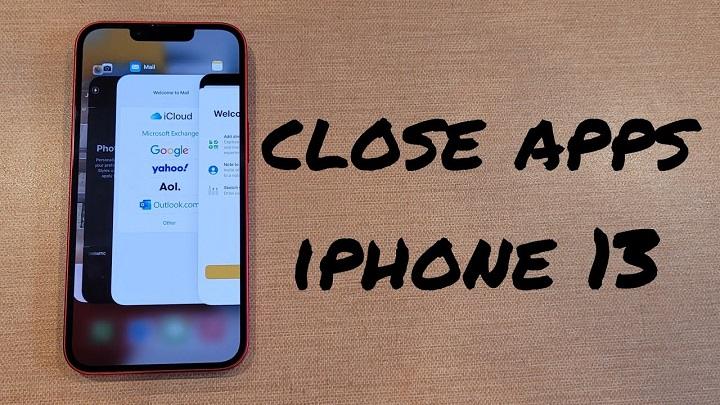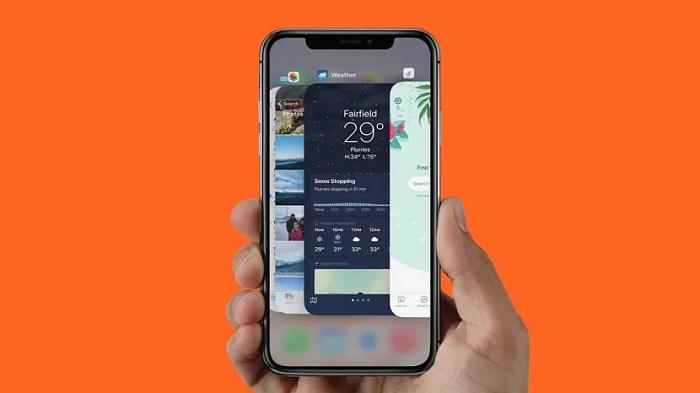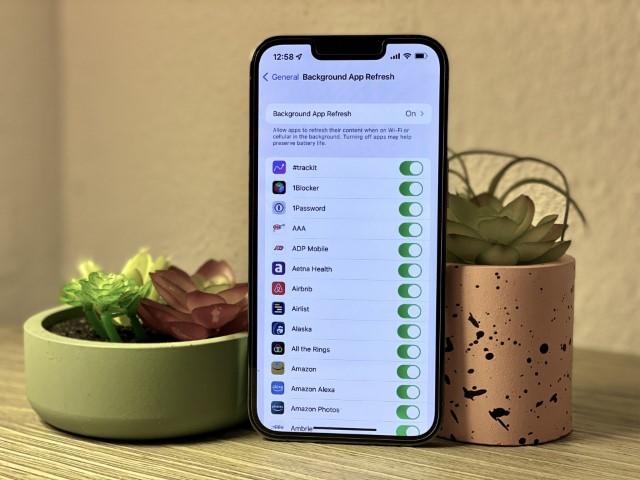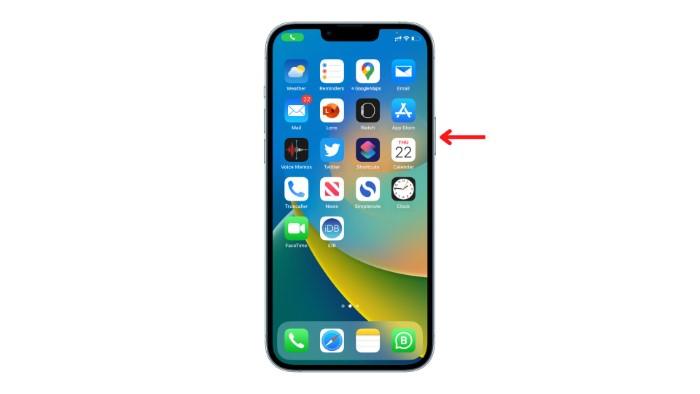The iPhone 13 is packed with advanced features and performance capabilities, but like any smartphone, managing your apps effectively is crucial for maintaining optimal performance and battery life. Learning how to close apps on iPhone 13 is essential for anyone looking to maximize their device’s efficiency and longevity. In this comprehensive guide, we’ll walk you through the various methods for closing apps on iPhone 13, discuss when and why you might want to close apps, and provide tips for managing your app usage effectively.
How to Close Apps on iPhone 13 Using the App Switcher
What is the App Switcher?
The App Switcher is a feature on the iPhone 13 that allows you to quickly view and switch between open apps. It also provides a convenient way to close apps that are running in the background.
Steps to Close Apps Using the App Switcher
- Swipe Up from the Bottom: Swipe up from the bottom edge of the screen and pause in the middle to open the App Switcher.
- Swipe Left or Right: Swipe left or right to browse through your open apps.
- Swipe Up on the App Preview: Find the app you want to close, then swipe up on its preview to close it. The app will disappear from the App Switcher, indicating it is no longer running in the background.
When and Why You Should Close Apps on iPhone 13
Understanding Background App Activity
Apps on iPhone 13 can remain in a suspended state when not in use. This means they are not actively consuming resources or draining battery life. However, some apps may continue running tasks in the background, such as refreshing content or tracking location.
Situations to Close Apps
- App Malfunctions: If an app is frozen or not responding, closing it through the App Switcher can resolve the issue.
- Conserving Battery Life: Closing resource-intensive apps, such as those using location services or streaming content, can help conserve battery life.
- Improving Performance: If your iPhone 13 feels sluggish, closing apps that are not in use can free up system resources and improve performance.
Myths About Closing Apps
There is a common misconception that frequently closing apps improves iPhone performance or saves battery life. In reality, iOS is designed to manage resources efficiently, and frequently closing apps can actually lead to increased battery usage, as the system needs to reload the apps from scratch.
How to Force Close Apps on iPhone 13
What Does Force Closing an App Mean?
Force closing an app involves terminating all processes associated with the app, not just removing it from view. This is useful when an app is frozen or causing issues.
Steps to Force Close an App
- Open the App Switcher: Swipe up from the bottom of the screen and pause to enter the App Switcher.
- Find the App to Force Close: Swipe left or right to locate the app you want to force close.
- Swipe Up on the App Preview: Swipe up on the app’s preview to force close it completely.
How to Manage App Background Refresh on iPhone 13
What is Background App Refresh?
Background App Refresh allows apps to update their content in the background, ensuring they have fresh data when you open them. This feature can use battery and data, so managing it effectively is key.
How to Manage Background App Refresh
- Open Settings: Go to Settings > General > Background App Refresh.
- Select Options: Choose whether you want to allow background refresh for all apps, only on Wi-Fi, or disable it entirely.
- Manage Individual Apps: Scroll down to toggle Background App Refresh on or off for specific apps.
How to Use Low Power Mode to Manage Apps on iPhone 13
What is Low Power Mode?
Low Power Mode is a feature that reduces the power consumption of your iPhone 13 by disabling certain features, including background app refresh, automatic downloads, and mail fetch.
Enabling Low Power Mode
- Open Settings: Go to Settings > Battery.
- Toggle Low Power Mode: Turn on Low Power Mode to conserve battery life and limit background activity.
Closing Apps on iPhone 13 with AssistiveTouch
What is AssistiveTouch?
AssistiveTouch is an accessibility feature that helps users perform tasks with gestures instead of physical buttons. You can use AssistiveTouch to open the App Switcher and close apps.
How to Enable AssistiveTouch
- Open Settings: Go to Settings > Accessibility > Touch > AssistiveTouch.
- Turn On AssistiveTouch: Toggle the switch to enable AssistiveTouch.
- Use AssistiveTouch to Close Apps: Tap the AssistiveTouch button, select Device, tap More, then tap App Switcher to view open apps and close them.
How to Close Apps on iPhone 13 Using Voice Control
Setting Up Voice Control
Voice Control allows you to control your iPhone using your voice. You can use Voice Control to open the App Switcher and close apps.
How to Enable Voice Control
- Open Settings: Go to Settings > Accessibility > Voice Control.
- Set Up Voice Control: Follow the on-screen instructions to set up Voice Control.
- Using Voice Commands: Say “Open App Switcher” to access your open apps, then “Swipe up” to close apps.
Methods to Close Apps on iPhone 13
| Method | Steps | Best For |
| App Switcher | Swipe up from bottom > Swipe left/right > Swipe up on app preview | Quickly closing multiple apps |
| Force Close | Open App Switcher > Swipe up on app preview | Closing unresponsive apps |
| Background App Refresh | Settings > General > Background App Refresh > Manage individual apps | Reducing background data usage |
| Low Power Mode | Settings > Battery > Toggle Low Power Mode | Conserving battery life |
| AssistiveTouch | Settings > Accessibility > Touch > AssistiveTouch > Use App Switcher | Accessibility and convenience |
| Voice Control | Settings > Accessibility > Voice Control > Use commands to close apps | Hands-free app management |
Additional Tips for Managing Apps on iPhone 13
Regularly Update Apps
Keeping your apps updated ensures they run smoothly and efficiently, reducing the need to frequently close or force close them. Check for updates regularly in the App Store.
Monitor App Usage
Use the Screen Time feature to monitor your app usage and identify any apps that may be consuming too much battery or causing performance issues. Go to Settings > Screen Time to access this feature.
Restart Your iPhone Periodically
Restarting your iPhone 13 periodically can help clear out temporary files and free up system resources, which can improve overall performance.
FAQs on How to Close Apps on iPhone 13
Does closing apps on iPhone 13 save battery life?
Not necessarily. iOS is designed to manage background apps efficiently, so closing apps frequently can actually use more battery as the system reloads them.
How do I know which apps are running in the background on iPhone 13?
Use the App Switcher to view all open apps. Swipe up from the bottom of the screen and pause in the middle to see a list of running apps.
Can I close multiple apps at once on iPhone 13?
Yes, you can close multiple apps at once by swiping up on multiple app previews simultaneously in the App Switcher.
What happens if I force close an app on iPhone 13?
Force closing an app terminates all processes related to the app. It can resolve issues with unresponsive apps but is not necessary for routine app management.
Is it safe to disable Background App Refresh on iPhone 13?
Yes, disabling Background App Refresh is safe and can help conserve battery life and data usage. However, some apps may not update in the background until they are opened.
Related Post:
How to Find Hidden Apps on iPhone: A Comprehensive Guide
How to Uninstall Apps on iPhone: A Step-by-Step Guide
Apps to Make Friends: Discover the Best Platforms to Connect and Socialize
Learning how to close apps on iPhone 13 is crucial for managing your device’s performance and battery life. Whether you’re using the App Switcher, force closing unresponsive apps, or managing background activity, there are several methods to control your app usage effectively. By following the tips in this guide, you can ensure your iPhone 13 runs smoothly and efficiently, providing you with the best user experience.





